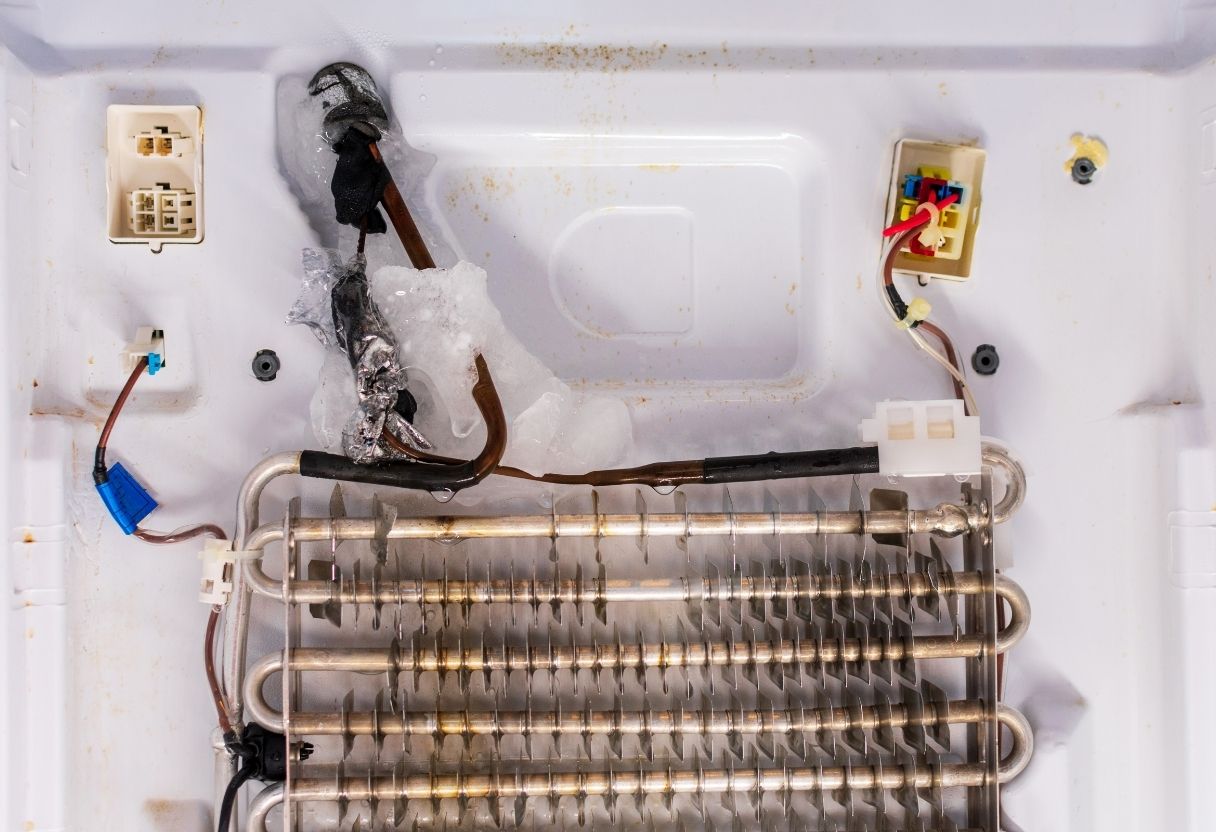3 Crucial Things You Need to Know About Your Commercial Refrigerators

As a restaurant operator, your refrigerator is your best friend. It’s responsible for storing your perishable inventory at optimal temperatures—ensuring their quality and safety for consumption.
With it playing such a critical role in your restaurant operations, here’s a question for you: Have you ever thought about the technological machinations behind what makes your commercial refrigeration systems do what they do best?
To better appreciate your lowboys, walk-ins, and cold rails, we’ve put together this quick and helpful guide giving you a behind-the-scenes look into your refrigeration units—and how to enhance their overall performance.
Firstly, how does a refrigerator work?
How can a refrigerator be so cold inside, yet so hot from behind? Your refrigerator contains what‘s known as refrigerant—a fluid that can quickly evaporate from liquid state to gas and vice versa.
Your refrigerator pressurizes, condenses, and evaporates this refrigerant in a closed circuit. This removes heat and, in turn, reduces the temperature inside the fridge.
This is a constant process occurring within your refrigerator.
Unfortunately, and ironically, this process contributes to global warming—accounting for 10% of global CO2 emissions.
Yet, it would not be possible without these vital components:
Important refrigerator components and what they do
-
Compressor
The compressor acts as the central component of your refrigerator. Gas at low pressure and temperature enters the compressor, where it then undergoes high-pressure compression—raising the gas’ temperature.
-
Condenser
This hot gas is then transferred to the condenser coils, where its heat subsides and is then turned back into a liquid. The addition of cooling ventilation fins located on the back of the refrigerator unit also aids in the condensation process.
- Capillary tube
The liquid refrigerant then channels through the expansion valve and capillary tube where it’s then sprayed into the low-pressure environment of the evaporator.
-
Evaporator
The evaporator is the component that makes the cold magic happen. As the cold liquid absorbs the warmth from the air inside the refrigerator, it turns back into a low-temperature gas. As a result, it cools the area around it—producing the appropriate environment for cold food storage.
-
Thermostat
The thermostat plays an essential job within your refrigerator—and that’s monitoring and controlling the whole cooling process.
When the thermostat sensor detects that temperatures have reached the ideal cold threshold, it turns off the compressor. Then once it senses temperatures reaching above the ideal cold threshold, it switches the compressor back on to resume the cooling process.
This cycle repeats throughout your refrigerator’s life—maintaining a stable temperature as much as possible.
What happens when commercial refrigerator components break down?
The refrigeration process is a delicate cycle that relies on the above components working in perfect synchronicity. Therefore, serious problems can arise if even just one of these components breaks down or fails to work at its full capacity.
Two of the most common symptoms of component failure are energy wastage and spoiled inventory.
Energy wastage causes a major discrepancy in your business’ utility bills—with much higher rates than they should be.
Spoiled inventory, on the other hand, can cost your restaurant thousands of dollars each year.
Specifically, an average restaurant would waste about 10% of their bought inventory per year. In the US restaurant industry alone, such spoilages would account for $162 billion worth of inventory wasted annually.
Thankfully, there are several warning signs you can look out for to determine imminent component failure and fridge breakdown.
These red flags include:
- Irregular sounds
- Excessive build-up of ice
- Overheating exterior
- A decrease in food quality, such as mold
- Leaks
- Excessive wear and tear
If you’re seeing at least one of these signs, what can you do in response?
How to avoid/prevent refrigerators from breaking down
It’s vital to keep a close eye on the temperature readings of your commercial freezers and fridge.
Our recommendation? An accurate and reliable form of temperature monitoring—whether through an aftermarket sensor or one contained internally within the system.
One of the very first and not-immediately-apparent signs of imminent refrigeration system failure is your fridge’s inability to maintain the ideal cold threshold temperature.
By the time it becomes apparent, it may already be too late for your perishables. As they may already have been exposed to the food safety danger zone for an extended period of time.
Temperature monitoring can help you detect this early—giving you time to seek proper preventive maintenance for your fridge. Not only would this save your inventory, but it can also reduce overall repair costs.
Storage temperatures exceeding 40° degrees Fahrenheit can spoil perishable items such as greens and meats in less than 2 hours. At warmer temperatures, bacteria can thrive and multiply every 20 minutes.
This means you should take even the earliest signs of imminent component failure seriously to prevent avoidable losses.
How smart temperature sensors help your commercial refrigeration system perform better
Temperature monitoring has always been part of the food service industry. Traditionally, it’s done through manual thermometer temperature checks.
Unfortunately, the risks involved in manual temperature checks are quite common. Usually, they would include human error, inaccurate readings, or unaccounted equipment failure during off-hours.
To reduce loss and improve profits, restaurateurs and fast-casual franchises have turned to a new solution—smart temperature sensors.
Smart temperature sensors automatically record the temperature of your refrigeration equipment—reducing the risks that come with traditional temperature management. GlacierGrid, for example, is a smart temperature sensor built specifically to cater to restaurants.
Developed to perform inside coolers, freezers, and other harsh environments, GlacierGrid's smart temperature sensors are accurate, reliable, and user-friendly.
GlacierGrid saves valuable employee time spent on daily temperature checks—freeing them up for other operations. It also reduces, if not completely prevents, equipment downtime by catching issues before they happen.
Need to cut costs without cutting corners?
Secure your inventory with smart temperature sensors.







